
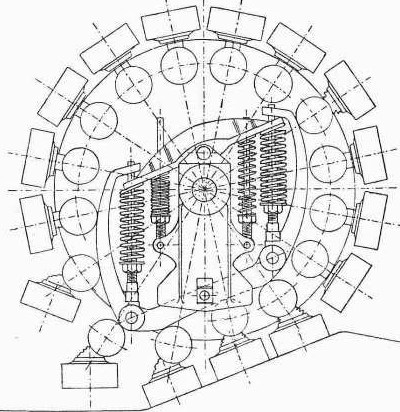
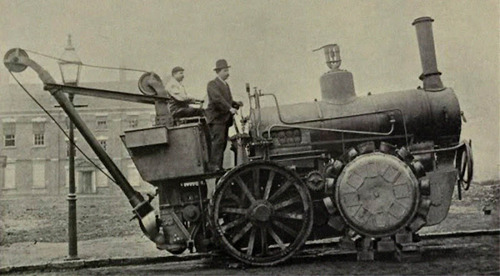
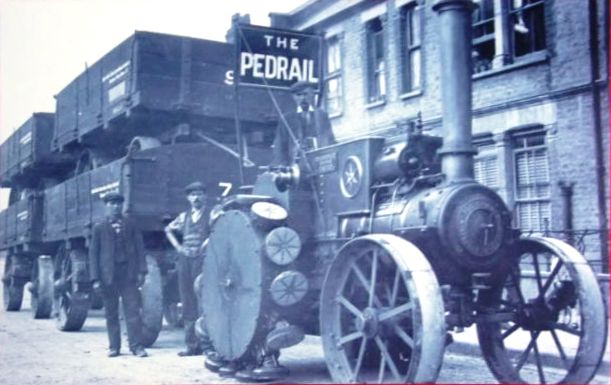
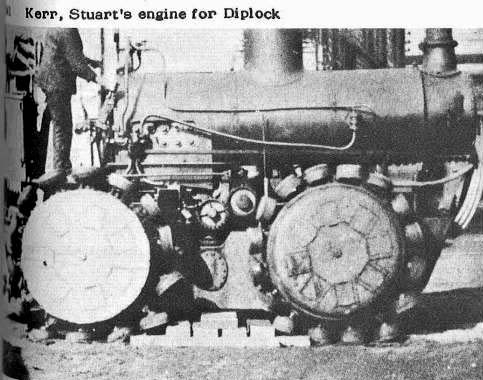
See full patent details here.
Patent number: 658004
Filing date: Feb 7, 1900
Issue date: Sep 18, 1900
Further patent improvements include US747387, US787500, and US979447.
Source: Popular Science September 1933


Some images located here.
The Pedrail wheel
Text from Wikipedia.
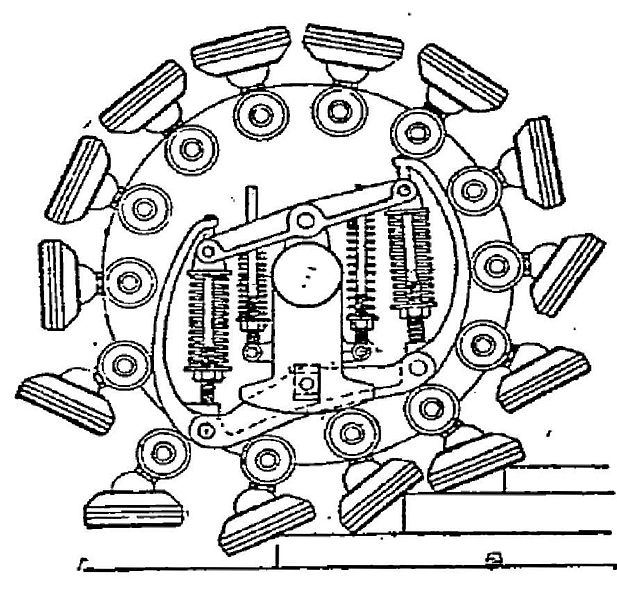
A pedrail wheel climbing stairs, February 7, 1904 The New York Times.
The pedrail wheel is a type of wheel developed in the early 20th century for all-terrain locomotion. It was used in agricultural machinery and was considered as a possible technique for the development of the tank in World War I, but was ultimately replaced by the more robust continuous track mechanism.
According to the 1913 Webster's Revised Unabridged Dictionary, a pedrail is:
"A device intended to replace the wheel of a self-propelled vehicle for use on rough roads and to approximate to the smoothness in running of a wheel on a metal track. The tread consists of a number of rubber shod feet which are connected by ball-and-socket joints to the ends of sliding spokes. Each spoke has attached to it a small roller which in its turn runs under a short pivoted rail controlled by a powerful set of springs. This arrangement permits the feet to accommodate themselves to obstacles even such as steps or stairs."
Invention
The pedrail wheel was invented in 1900 by the Londoner Bramah Joseph Diplock. It consists in the adjunction of feet (Latin radical "ped") to the rail of a wheel, in order to improve traction and facilitate movement in uneven or muddy terrain. Sophisticated pedrail wheels were designed, with individual suspension for each foot, which would facilitate the contact with uneven terrain.
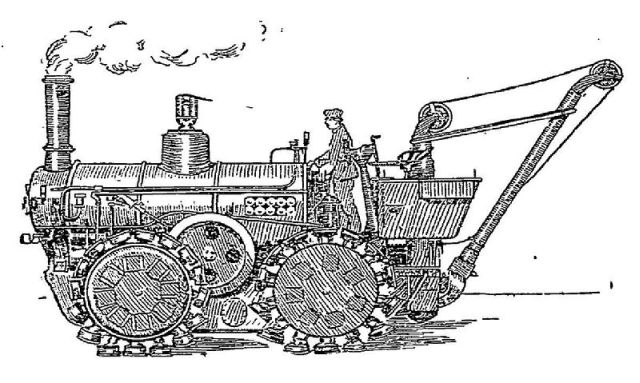
Bramah Joseph Diplock also invented the pedrail locomotive which was featured in the 7 February 1904 New York Times.
Fiction
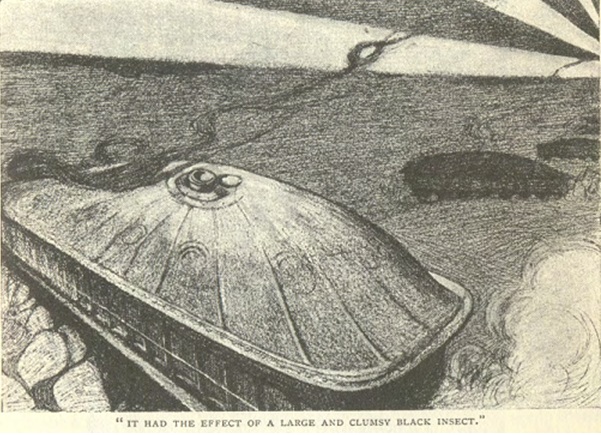
1904 illustration of H.G. Wells' December 1903 The Land Ironclads, showing huge ironclad land vessels, equipped with pedrail wheels.
H. G. Wells, in his short story The Land Ironclads, published in The Strand Magazine in December 1903, described the use of large, armoured cross-country vehicles, armed with cannon and machine guns, and equipped with pedrail wheels, to break through a system of fortified trenches, disrupting the defence and clearing the way for an infantry advance:
"They were essentially long, narrow and very strong steel frameworks carrying the engines, and borne upon eight pairs of big pedrail wheels, each about ten feet in diameter, each a driving wheel and set upon long axles free to swivel round a common axis. This arrangement gave them the maximum of adaptability to the contours of the ground. They crawled level along the ground with one foot high upon a hillock and another deep in a depression, and they could hold themselves erect and steady sideways upon even a steep hillside."
In War and the Future, H.G. Wells acknowledged Mr. Diplock's pedrail as the origin for his idea of an all-terrain armoured vehicle:
"The idea was suggested to me by the contrivances of a certain Mr. Diplock, whose "ped-rail" notion, the notion of a wheel that was something more than a wheel, a wheel that would take locomotives up hill-sides and across ploughed fields, was public property nearly twenty years ago"
Diplock later extended his idea to a continuous track.
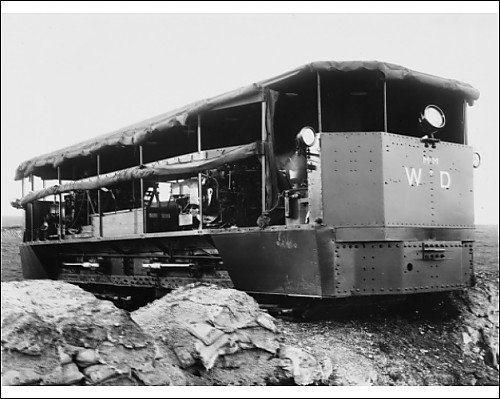
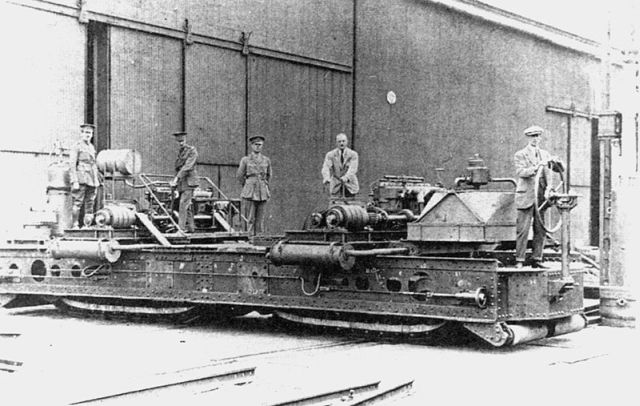
Patent number: 1096893 see full details here.
Filing date: Jul 1, 1912
Issue date: May 19, 1914
In World War II, the Germans deployed a vehicle that had Pedrail-type wheels, called the VsKfz 617 Minenräumer (minesweeper).
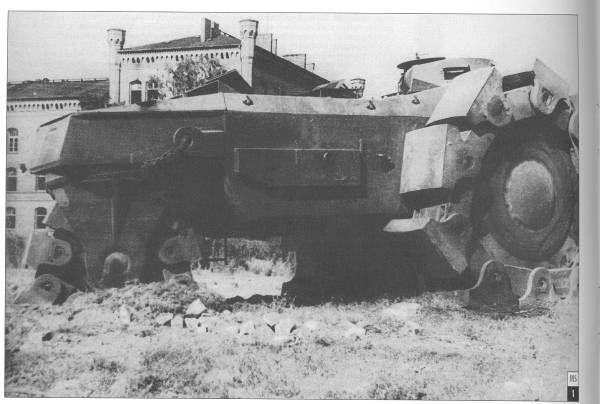

A Plastic model kit by RPM.
See other Walking Wheels at the bottom of the Walking Machines page.